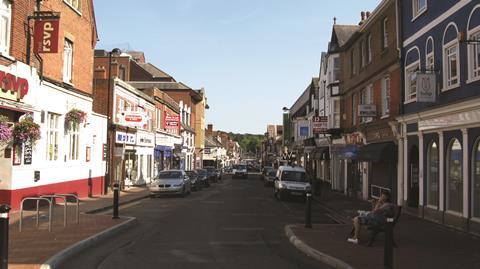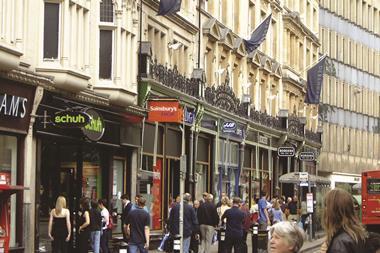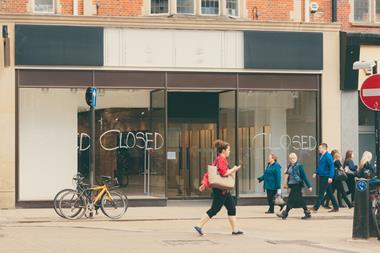Some 40% of UK retail sites are paying over the odds in business rates because of the Government’s controversial decision to defer a property revaluation to 2017.

Research from property firm Jones Lang LaSalle (JLL) Retail calculated that the deferred revaluation two years from 2015 to 2017 also found 28% of locations are benefitting from the measure, while 32% of sites are unaffected by the proposal.
JLL head of UK retail and leisure Tim Vallance said: “Further damage to the UK high street is inevitable if revaluations are deferred.
“We need to bring forward valuations and to ensure future valuations are undertaken on a more frequent basis; structural change is playing out and the retail landscape is changing before us. Changes in market rents will move with changing demand for space, business rates should also.”
The Government conducts property valuations every five years to ensure businesses are paying accurate taxes. But last year it decided to push the revaluation back two years, reasoning that it would help businesses. It has faced a backlash from retailers who argue that the delay will mean they will be paying rates based on the last valuation in 2008 at pre-recession levels for an extra two years when the property market has changed substantially since then.
But high street minister Brandon Lewis who pushed through the Governmet’s decision to defer the revaluation hit back at the research. He said: “People should take this so-called research from surveyors with a pinch of salt. They should declare their financial interest, as it is only surveyors who are losing out from a later revaluation, as it means less work for them from charging for business rate appeals.
“A 2015 revaluation would have meant tax cuts for bankers and posh offices in London, and punishing tax rises on local pubs, food retail and petrol stations – meaning higher prices and a higher cost of living for hard-working people.
“Our decision was based on research by the independent Valuation Office Agency’s using professional judgements and rental market evidence. They estimate that over 800,000 premises would have lost out. Tax stability is vital to businesses looking to grow and help improve the economy.”
JLL found that London retailers are the biggest winners from the postponement because the value of many retail sites would have increased had the revalution taken place in 2015 as planned. But it warned that when the revaluation takes place in 2017 there will be a sharp rise in rates in prime locations.
Those locations losing out from the revaluation deferral are sites that experienced unsustainable rental growth to 2008 then rental declines when the recession hit. JLL said that in some instances rents have fallen by over 50%.
It added that the retail locations negatively impacted by the Government’s decision would be greater if data included secondary and arguably tertiary retail locations. JLL examined data across 1,000 retail locations in the UK, monitoring the headline rent in 2008 and 2013.
Locations that have been unaffected by the two-year delay tend to be those in smaller regional retail locations that never had a sudden surge in rent to 2008 as any rental falls have been marginal, said JLL.
British Council of Shopping Centres director of policy Edward Cooke said: “Delaying the business rates revaluation was madness and based on spurious data. As this latest research shows, the regions most needing support were most damaged from the delay.
“Lessons must be learned and, although a U-turn is clearly not on Government’s priority list, it must use the time until 2017 to reform the system. As a start, this means introducing yearly revaluations and reviewing annual increases based on September’s RPI.”
Business rates is the biggest gripe among retailers who believe excessive rates are restricting investment and job creation. Last week the Department for Business, Innovation and Skills revealed the results from its Inquiry into the retail sector which said the business rates system was “unfit for purpose” and recommended more frequent revaluations.
| Region | Winners | Flat | Losers |
|---|---|---|---|
| (%) | (%) | (%) | |
| London | 52 | 26 | 22 |
| South East | 32 | 39 | 28 |
| South West | 40 | 39 | 22 |
| West Midlands | 21 | 26 | 53 |
| East Midlands | 11 | 33 | 56 |
| East of England | 12 | 25 | 63 |
| North East | 9 | 41 | 50 |
| North West | 6 | 39 | 55 |
| Yorkshire and the Humber | 19 | 28 | 54 |
| Scotland | 17 | 31 | 52 |
| Wales | 39 | 24 | 37 |
| Total | 28 | 32 | 40 |




























3 Readers' comments